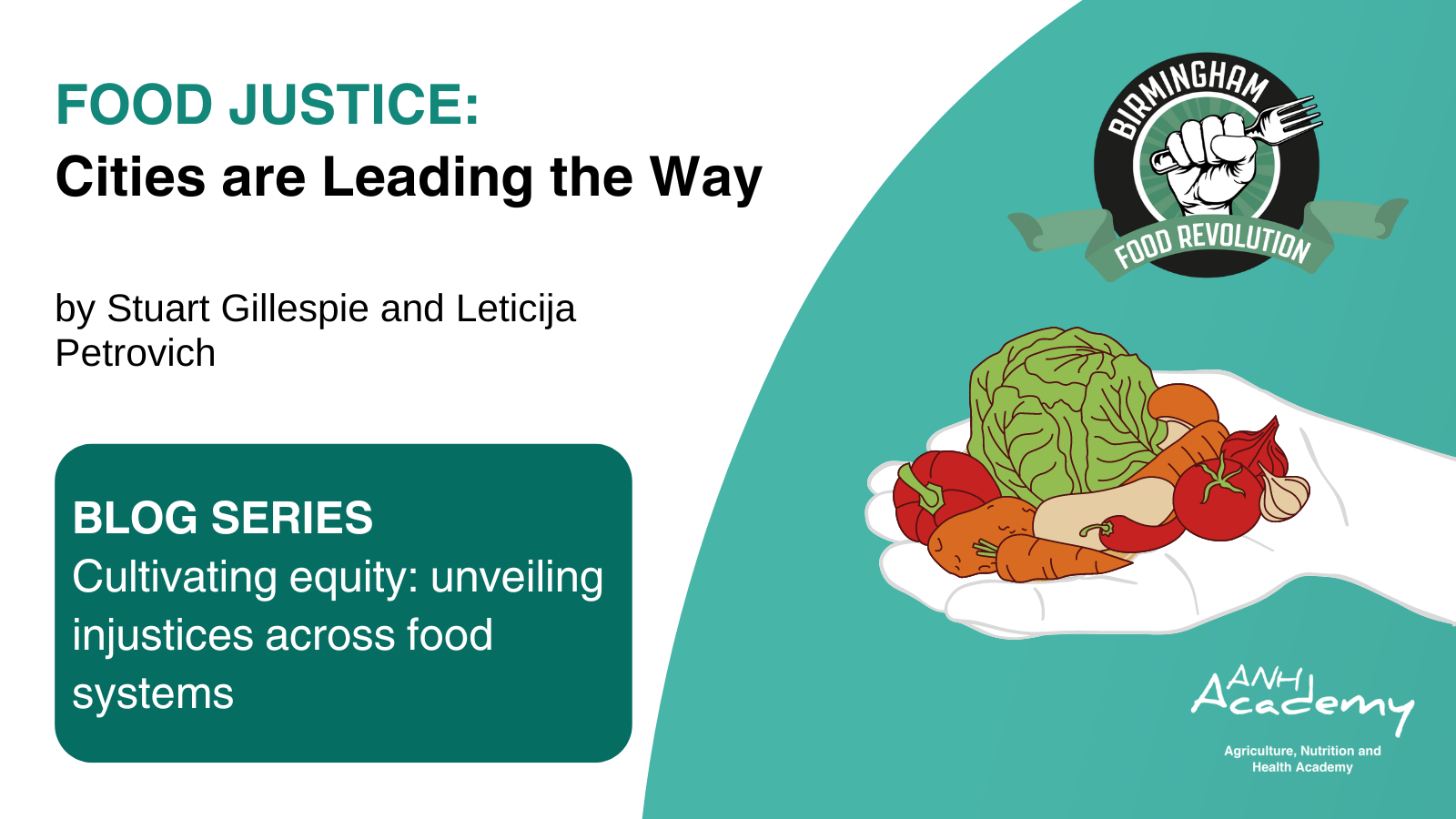If you are hungry and malnourished, it is difficult to be a productive member of society. It is impossible to meet the ambitious targets set out by the Sustainable Development Goals, if we don’t address nutrition, according to Martin Frick, Director of Climate, Energy and Tenure at the UN Food and Agriculture Organization (FAO), speaking at a side event in Paris at the United Nations Convention on Climate Change Conference of Parties (COP21). To emphasize his point, Frick referred to estimates by the FAO that malnutrition may cost as much as 5% of global Gross Domestic Product, or USD 1.4 to 2.1 trillion per year. So, enhancing nutrition is fundamentally about fueling growth and the development of individuals and society.
Improving the nutrition of rural populations will not be simple, however. For years, the development communities have used every tool at their disposal to fight malnutrition, including technology, training, and communications to increase food availability and change consumption patterns. Despite laudable progress, there is still a long way to go. About 159 million children around the world suffer from stunting, or low height for their age caused by malnutrition, and another 50 million from wasting, low weight for height caused by a recent period of starvation or disease.
“The job of reaching those at risk in meaningful ways is only going to become more difficult,” according to Cristina Tirado, Chair of the International Union of Nutritional Sciences task force on Climate Change and Nutrition, speaking at another nutrition-themed COP21 side event. “Both the quantity and [nutritious] quality of foods are threatened by climate change, and the impacts will become both more acute and chronic in the future.”
A recent meta-analysis of the impacts of climate change on nutrition illuminates the challenge ahead. The paper, published in the Proceedings of the National Academy of Sciences, provides the first systematic review of the mechanisms connecting climate, agriculture and nutrition. Data are limited but suggest that climate change may contribute to stunting directly through precipitation and droughts and weather variability, which in turn affect crop harvests, food availability, and prices and hence food security of at risk populations.
However, direct links between weather and crops aren’t the only way in which climate change may impact nutrition via agriculture. Sabrina Chesterman, a PhD student at the London School of Hygiene and Tropical Medicine, adds that women’s workload and energy expenditure, markets and off-farm income, rural-urban linkages and many other factors can affect household nutritional status. In many cases, the complex relationships are just now beginning to come into view (paper) and these leverage points may be impacted by climate change in direct or indirect ways to mitigate or exacerbate nutrition concerns.
 Such complexity did not discourage discussion on climate, agriculture, and nutrition at COP21. More than 10 side events focused on ‘health’ versus just one six year ago, with many specifically discussing nutrition. Speaking during the session organized by the Global Panel on Agriculture and Food Systems for Nutrition, Rachel Kyte, Vice President of Sustainable Development with the World Bank Group, John Kufuor, former President of Ghana, and James Kinyangi, East African Regional Coordinator for CGIAR Research Program on Climate Change, Agriculture and Food Security, amongst others, suggested climate-smart agriculture (CSA) - agriculture and food systems that increase productivity, resilience, and mitigate climate change when possible - is a key approach for improving nutrition in the face of climate change, and that we need to work explicitly toward climate-smart food systems for enhanced nutrition.
Such complexity did not discourage discussion on climate, agriculture, and nutrition at COP21. More than 10 side events focused on ‘health’ versus just one six year ago, with many specifically discussing nutrition. Speaking during the session organized by the Global Panel on Agriculture and Food Systems for Nutrition, Rachel Kyte, Vice President of Sustainable Development with the World Bank Group, John Kufuor, former President of Ghana, and James Kinyangi, East African Regional Coordinator for CGIAR Research Program on Climate Change, Agriculture and Food Security, amongst others, suggested climate-smart agriculture (CSA) - agriculture and food systems that increase productivity, resilience, and mitigate climate change when possible - is a key approach for improving nutrition in the face of climate change, and that we need to work explicitly toward climate-smart food systems for enhanced nutrition.
Like nutrition, CSA seemed to be a topic du jour at many observer events at COP21. In the first week alone, no fewer than seven sessions explicitly touched or focused entirely on CSA, with speakers ranging from David Nabarro, Special Representative to the [UN] Secretary General on Food Security and Nutrition, to farmer Kisilu Musya from eastern Kenya. Furthermore, national, continental, and international bodies reiterated or set new targets for CSA at COP21. Again, the Global Alliance for Climate-Smart Agriculture (GACSA) repeated their goal of reaching 500 million smallholder farmers. The African CSA Alliance is looking to transform the African agricultural landscape by contributing to ‘Vision 25x25’, an ambitious target set by the African Union’s New Partnership for African Development, which aims reach 25 million smallholder farm households by 2025. Costa Rica, Ireland, Spain, Tanzania and the USA all made public commitments to the cause.
This kind of high-level buy-in leads many to believe that CSA has the potential to transform climate, agriculture, and nutrition outcomes at national, regional and global scales.
Nutrition has always been one of the outcomes considered under CSA, along with many others such as income, soil carbon sequestration, and resource use efficiency. A specific nutrition sensitive CSA agenda would help promote cross-sectoral strategies aimed at a key goal, arguably one that has the greatest potential to contribute the Sustainable Development Goals. Though food production, food security and ending hunger are recognized in the Paris Agreement (see Annex and Article 2 in text), we still must wait to see if this translates into meaningful action linking climate, agriculture, and nutrition.
Whether COP21 represents a ‘coming of age’ of CSA for nutrition paradigm remains to be seen. But the atmosphere in Paris certainly seemed primed. The political will is there, the development and research communities are on board, and participants at COP21 clearly appeared to be heading in that direction.
By Dr. Todd S. Rosenstock, environmental scientist at the World Agroforestry Centre based in Nairobi, Kenya. Todd is the Principal Investigator on an IMMANA-funded project 'Surveillance of Climate‐Smart Agriculture for Nutrition (SCAN)'.
Photos: @ICRAF
Top: Visit to John Oboum's climate-smart farm site in Western Kenya. Photo: C. Schubert (CCAFS)
In text: Farm under FMNR for 10 year in CCAFS Climate Smart Village in Niger. Photo: P.Savadogo (ICRAF)
Further reading:
• Alliance for Climate-Smart Agriculture in Africa
• FAO. 2013. Climate-Smart Agriculture Sourcebook. Rome. UNFAO.
• Frelat R, et al. 2015. Drivers of household food availability in sub-Saharan Africa based on big data from small farms. Proc. Natl. Acad. Sci., doi:10.1073/pnas.1518384112.
• Global Panel on Agriculture and Food Systems for Nutrition. 2015. Climate-smart food systems for enhanced nutrition. Policy Brief. London: Global Panel on Agriculture and Food Systems for Nutrition.
• Harvey CA, et al. 2014. Climate-Smart Landscapes: Opportunities and Challenges for Integrating Adaptation and Mitigation in Tropical Agriculture, Conserv. Lett. 7:77–90, doi:10.1111/conl.12066.
• Neufeldt H, et al. 2013. Beyond climate-smart agriculture: toward safe operating spaces for global food systems, Agric. Food Secur. 2: 12, doi:10.1186/2048-7010-2-12.
• Phalkey RK, C Aranda-Jan, S Marx, B Höfle, R Sauerborn. 2015. Systematic review of current efforts to quantify the impacts of climate change on undernutrition. Proc. Natl. Acad. Sci. 112: E4522–E4529, doi:10.1073/pnas.1409769112.
About this blog series
This blog post is the first of what will be a monthly series that reports on the activities and advances in the Surveillance of Climate-smart Agriculture for Nutrition (SCAN) project. SCAN aims to provide the technical infrastructure to monitor climate, agriculture, and nutrition linkages, outcomes, and impact at scale during the implementation and out-scaling of Climate-Smart Agriculture across Africa. SCAN contributes the monitoring efforts of the CGIAR Research Program on Climate Change, Agriculture and Food Security (CCAFS) Flagship Project ‘Partnership for Scaling Climate-Smart Agriculture’ (P4S) co-led by the World Agroforestry Centre (ICRAF) and the International Center for Tropical Agriculture (CIAT). SCAN is funded by the UK Department for International Development (DFID) through the Innovative Methods and Metrics for Agriculture and Nutrition Action (IMMANA) program administered by the Leverhulme Centre for Integrative Research on Agriculture and Health (LCIRAH).






